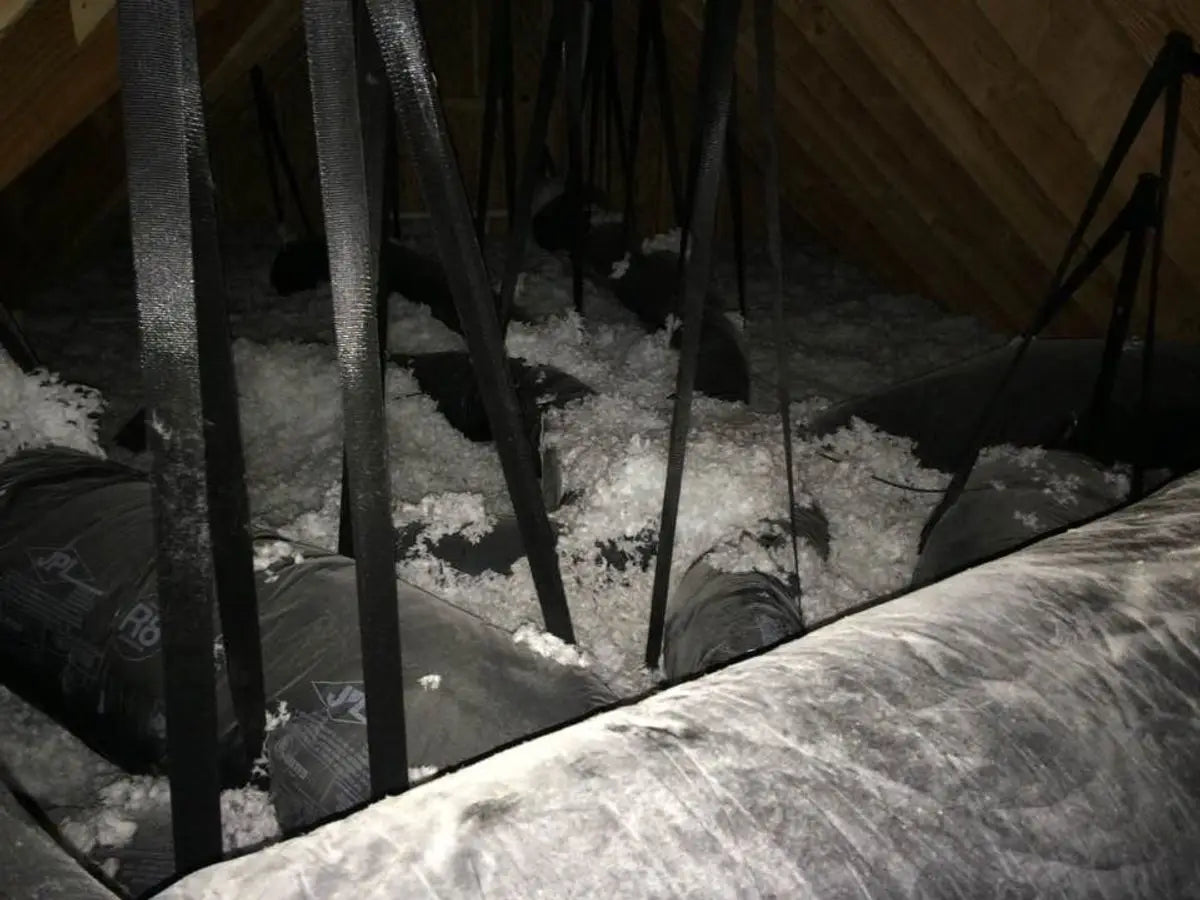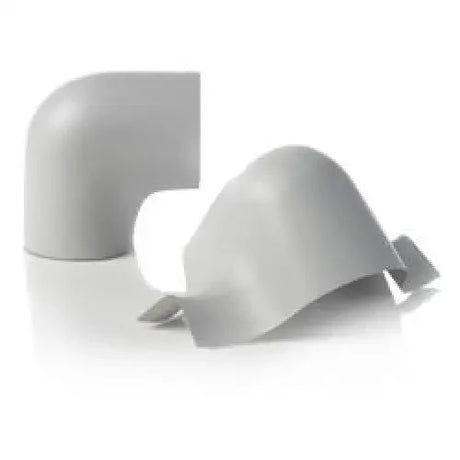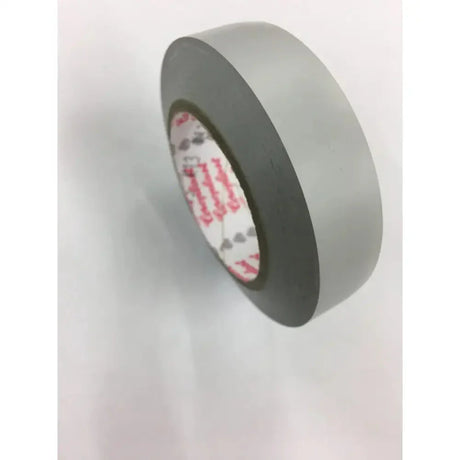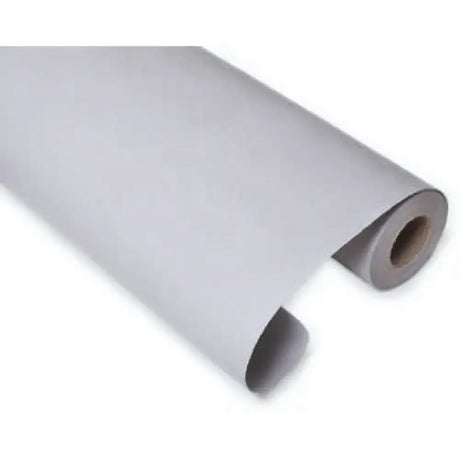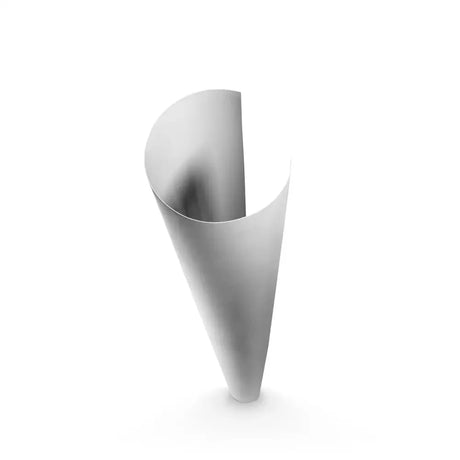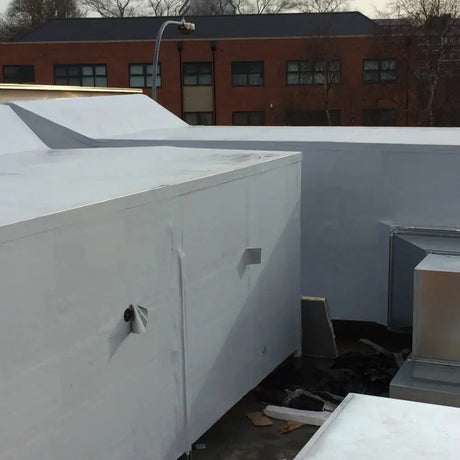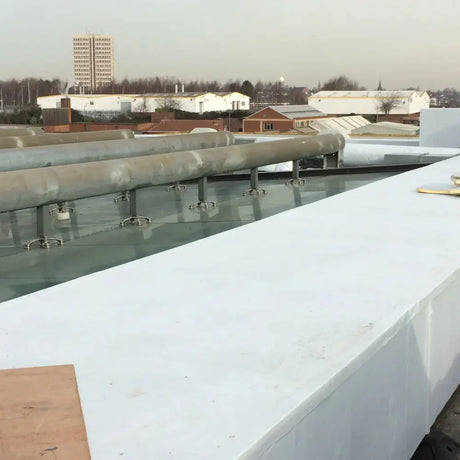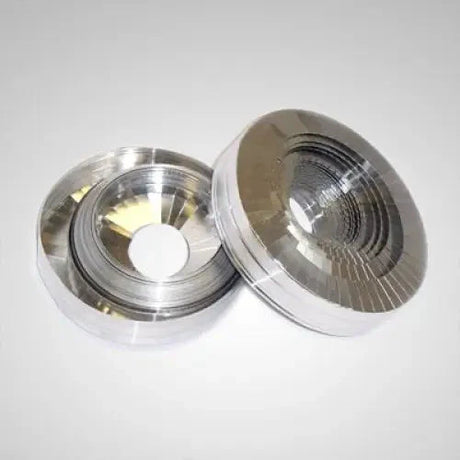Duct insulation plays a pivotal role in maintaining energy efficiency and comfort in buildings and whether it's for heating, ventilation, or air conditioning systems, the type of insulation used can significantly impact performance and cost. This guide delves into the various types of duct insulation, examining their materials, performance characteristics, installation techniques, compliance with regulations, and cost-effectiveness. It's designed to help professionals and homeowners alike make informed decisions when selecting and installing duct insulation.
Key Takeaways
- There are multiple types of duct insulation materials, each with its unique properties, such as fiberglass liners, polyethylene foam, reflective systems, and mineral wool options.
- Duct insulation's performance is gauged by thermal efficiency, acoustic control, moisture resistance, and compliance with fire and smoke standards.
- Proper installation of duct insulation is crucial and includes correct sizing, sealing, and addressing specific ductwork shapes and corners.
- Regulatory compliance and environmental considerations are key factors, with building codes dictating standards and a growing demand for sustainable materials.
- A comprehensive cost analysis and lifecycle assessment are essential, weighing initial investments against long-term savings and the potential for energy conservation.
Understanding Duct Insulation Materials
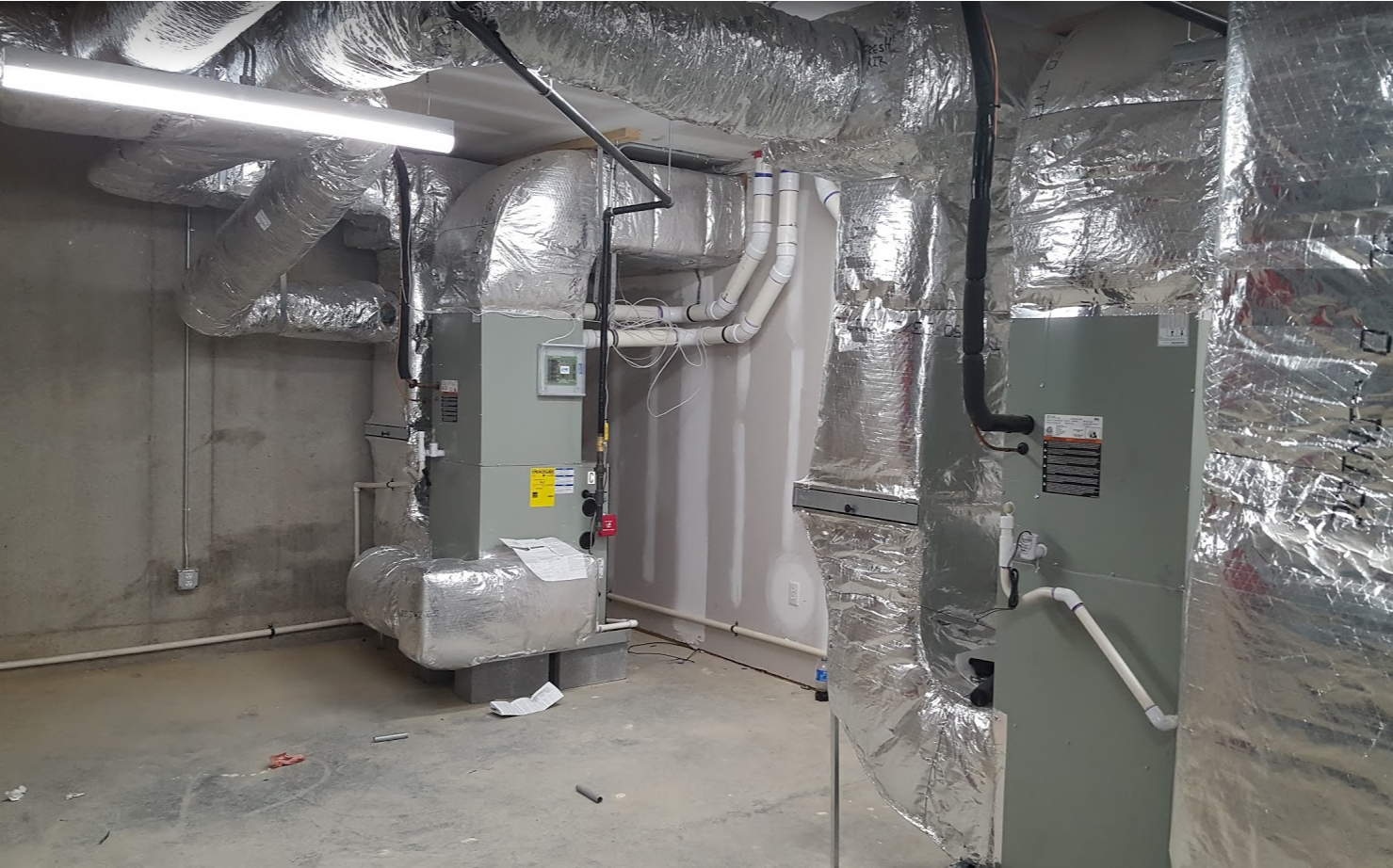
Fiberglass Duct Liners and Wraps
Fiberglass is a common choice for duct insulation due to its excellent thermal and acoustic properties. It effectively reduces heat transfer and dampens sound, making it ideal for both commercial and residential HVAC systems. Fiberglass duct liners and wraps come in various thicknesses and densities to suit different applications.
Fiberglass insulation is also relatively easy to install. However, it's important to handle it with care to avoid irritation or health concerns. Proper personal protective equipment (PPE) should be worn during installation to prevent skin contact and inhalation of fibers.
When considering fiberglass duct insulation, it's crucial to assess the specific needs of your HVAC system as each system will have manufacturer determined specifications you should not ignore for safety, longevity and proper functioning.
Here are some key benefits of using fiberglass duct liners and wraps:
- Excellent thermal resistance
- Good sound absorption qualities
- Variety of sizes and specifications available
- Compatibility with most ductwork systems
Polyethylene Foam
Polyethylene foam is a lightweight, closed-cell foam commonly used for duct insulation. Its unique structure provides excellent thermal resistance and a degree of moisture protection, making it a suitable choice for HVAC systems. It is particularly effective in reducing heat transfer, ensuring that air traveling through the ducts maintains the desired temperature.
Polyethylene foam is also easy to handle and install, which can lead to reduced labor costs. However, it is important to ensure that the material is properly sealed to prevent air leakage and maximize its insulative properties.
Polyethylene foam's flexibility allows it to conform to various shapes and sizes of ductwork, providing a snug fit and enhanced insulation.
For those looking to explore a range of insulation options, we offers various types of pipe insulation including fiberglass, mineral wool, elastomeric foam, and more. We also provide tips for proper installation and mention reputable brands like Armacell and Rockwool, ensuring that our customers have access to high-quality materials and information.
Reflective Insulation Systems
Reflective insulation systems, often made from aluminum foil laminated onto paper or plastic, are designed to reduce radiant heat gain. By reflecting thermal radiation, these systems can significantly improve energy efficiency in HVAC systems. They are particularly effective in hot climates, where they can prevent heat from entering a building's ductwork.
Reflective insulation is also lightweight and easy to install, making it a popular choice for both new construction and retrofit applications. It's important to note, however, that its performance is highly dependent on proper installation, including an air gap between the reflective surface and the adjacent material.
Reflective insulation systems can be an integral part of achieving optimal performance and comfort in a building's HVAC system.
When considering reflective insulation, it's essential to understand the various performance characteristics that contribute to its effectiveness:
- Low emissivity (ability to reflect heat)
- High reflectivity (ability to redirect radiant heat)
- Resistance to conductive heat flow
These properties make reflective insulation a valuable addition to our portfolio as a supplier of premium duct insulation products.
Mineral Wool Insulation Options
Mineral wool insulation, also known as rock or slag wool insulation, is a highly durable material that provides excellent fire resistance and sound absorption properties. It is made from natural minerals and recycled materials, making it an environmentally friendly choice for duct insulation.
Mineral wool is particularly effective in high-temperature applications due to its ability to withstand temperatures up to 1,000 degrees Celsius without melting. This characteristic makes it an ideal option for insulating ducts that may be exposed to extreme heat.
Thermal conductivity is a critical factor in insulation performance, and mineral wool offers low thermal conductivity, which translates to high energy efficiency. The following table summarizes the key properties of mineral wool insulation:
| Property | Value |
|---|---|
| Thermal Conductivity | Low |
| Fire Resistance | High |
| Sound Absorption | Excellent |
| Environmental Impact | Eco-friendly |
Mineral wool insulation is not only robust in terms of performance but also contributes to a safer and more sustainable building environment.
When considering mineral wool for your duct insulation needs, it is important to assess the specific requirements of your project to ensure compatibility and optimal performance. Professional installation is recommended to maximize the benefits of mineral wool insulation.
Performance Characteristics of Duct Insulation
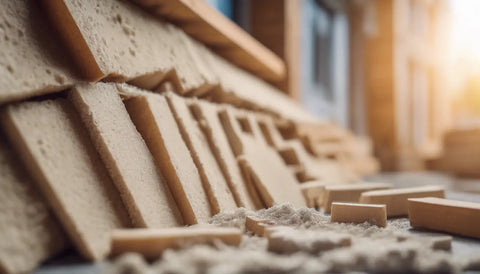
Thermal Efficiency Ratings
Experts all understand that the thermal efficiency of duct insulation is paramount to maintaining energy conservation and cost-effectiveness in HVAC systems and that the R-value is a critical measure of insulation's ability to resist heat flow. Higher R-values indicate greater insulating power, which can significantly reduce energy consumption and improve overall system performance.
| Insulation Type | R-Value Range (per inch) | Different Forms |
|---|---|---|
| Fiberglass | R3.0 - R4.0 | Batts, rolls, loose-fill |
| Polyethylene Foam | R4.2 | Sheets |
| Reflective Insulation | Varies | Rolls, sheets |
| Mineral Wool | R3.0 - R4.0 | Batt insulation, board insulation |
| Phenolic Foam | Varies | Boards, panels |
It's essential to select the right R-value based on the specific requirements of your building and climate zone to ensure optimal thermal efficiency.
Insulation & More offers a wide range of HVAC insulation products from top brands like Rockwool, Isover, and Kaiflex. Products include pipe insulation, duct insulation, and accessories for efficient HVAC systems. When considering insulation options, it's important to balance the initial investment with the long-term energy savings potential.
Acoustic Control Capabilities
When considering the acoustic properties of duct insulation, it's essential to understand how different materials can influence sound transmission. Effective acoustic insulation can significantly reduce noise levels, contributing to a more comfortable and productive environment. Insulation & More provides a variety of solutions designed to meet diverse acoustic requirements.
Acoustic performance varies by material, with some insulations offering superior sound absorption qualities. For instance, fiberglass and mineral wool are often preferred for their ability to dampen sound. Below is a list of common insulation materials and their general acoustic control capabilities:
- Fiberglass Duct Liners: Excellent sound absorption
- Polyethylene Foam: Good for reducing vibrations
- Reflective Insulation Systems: Less effective acoustically
- Mineral Wool: High performance in sound dampening
It's important to select the right type of insulation for your specific needs to ensure optimal acoustic control. Insulation & More is committed to helping customers find the best fit for their projects.
Remember, the goal is not only to insulate but also to enhance the quality of life by minimizing disruptive noise. Insulation & More makes it convenient to get started on your acoustic insulation project.
Moisture Resistance and Air Permeability
The ability of duct insulation to resist moisture and control air permeability is crucial for maintaining system efficiency and preventing mold growth. Moisture resistance ensures that the insulation material does not absorb water, which can compromise thermal performance and lead to the deterioration of the ductwork. On the other hand, air permeability measures the ease with which air can pass through the insulation material, affecting both thermal efficiency and sound attenuation.
It is essential to select insulation materials that provide a balance between moisture resistance and air permeability to ensure optimal performance and longevity of the duct system.
The following table summarizes the moisture resistance and air permeability characteristics of common duct insulation materials:
| Material | Moisture Resistance | Air Permeability |
|---|---|---|
| Fiberglass | High | Moderate |
| Polyethylene Foam | Very High | Low |
| Reflective Insulation | Moderate | High |
| Mineral Wool | High | Moderate |
When considering insulation for ductwork, it's important to take into account the specific environmental conditions and the potential for moisture exposure. Proper installation techniques can also enhance the moisture resistance and reduce air infiltration, contributing to the overall efficiency of the HVAC system.
Fire and Smoke Performance Standards
When selecting duct insulation, it's crucial to consider the material's ability to resist fire and limit smoke production. Building regulations often dictate the minimum performance standards for these properties to ensure safety in the event of a fire. Insulation materials are rated based on their flammability and smoke development, with classifications ranging from non-combustible to highly flammable.
- Class A: Non-combustible
- Class B: Very limited contribution to fire
- Class C: Some contribution to fire
- Class D: High contribution to fire
- Class E: Very high contribution to fire
It is essential to match the fire and smoke performance of the insulation to the specific requirements of the building and its usage. Failure to comply can result in significant safety hazards and legal repercussions.
The choice of insulation can greatly impact the overall safety of a building. Therefore, it is important to consult with experts and adhere to the prescribed standards to mitigate risks associated with fire and smoke.
Installation Techniques for Duct Insulation

Proper Sizing and Fitting
Ensuring that duct insulation is properly sized and fitted is crucial for maximizing energy efficiency and minimizing heat loss. Incorrect sizing can lead to gaps or compression, which significantly reduces the insulation's effectiveness. It's essential to measure the ductwork accurately before selecting the insulation material.
Installation should be performed by professionals who can ensure that the insulation fits snugly around the ducts without any spaces or overlaps. This is particularly important at bends and junctions where air leakage is more likely to occur. A well-fitted insulation helps maintain the integrity of the HVAC system and contributes to a consistent indoor climate.
- Measure the ductwork dimensions
- Select the appropriate insulation material
- Cut the insulation to the required size
- Secure the insulation with proper fastening methods
Attention to detail during the installation process can prevent costly energy losses and extend the lifespan of both the insulation and the HVAC system itself.
Sealing and Fastening Methods
Ensuring that duct insulation is properly sealed and fastened is crucial for maintaining its effectiveness and longevity. Proper sealing techniques prevent air leaks, which can significantly undermine insulation performance. For fastening, a variety of methods are used, depending on the insulation material and the ductwork's surface.
Adhesive tapes, staples, or mechanical fasteners are commonly employed to secure insulation in place. It's important to select the right type of fastener to avoid damaging the insulation and to ensure a tight fit. For example, mechanical fasteners are suitable for rigid insulation boards, while adhesive tapes are often used for flexible insulative wraps.
Addressing Corners and Joints
When insulating ductwork, corners and joints are critical areas that require special attention to prevent air leaks and thermal bridging. Proper insulation at these points is essential for maintaining the overall efficiency and performance of the duct system.
Sealing corners and joints effectively can be achieved using a variety of methods, including mastic sealants, aluminum foil tape, or butyl tape. Each method has its own set of advantages and is suitable for different types of ductwork materials and conditions.
- Mastic sealant: Durable and flexible, ideal for irregular surfaces.
- Aluminum foil tape: Reflective properties, best for smooth surfaces.
- Butyl tape: Strong adhesive, resistant to temperature changes and moisture.
Ensuring that corners and joints are well-insulated will contribute significantly to the overall energy efficiency of a building's HVAC system.
Insulation for Different Ductwork Shapes
Ductwork comes in various shapes and sizes, each presenting unique challenges for insulation. Round ducts are common and typically easier to insulate due to their consistent shape. However, rectangular and spiral ducts might require more precise cutting and fitting of insulation materials.
Custom insulation solutions are often necessary for non-standard ductwork shapes to ensure complete coverage without compromising the duct's performance. It's crucial to address every angle and surface to maintain energy efficiency and prevent condensation.
- Measure the duct's dimensions accurately.
- Select the appropriate insulation material.
- Cut the insulation to fit snugly around the ductwork.
- Secure the insulation with proper fasteners and sealants.
Ensuring that insulation fits correctly around all ductwork shapes is not just about energy efficiency; it's about maximizing the lifespan of the HVAC system and maintaining indoor air quality.
Duct Identification Triangles for ductwork follow color-coding guidelines similar to pipe labels. This system aids in the quick identification of duct contents and characteristics, which is especially useful during maintenance or emergency situations.
Regulatory Compliance and Environmental Considerations

Building Codes and Insulation Standards
Navigating the complex landscape of building codes and insulation standards is crucial for ensuring compliance and safety in construction. Building regulations often specify the minimum requirements for thermal performance, fire safety, and energy efficiency that duct insulation materials must meet. It's essential to stay informed about the latest amendments to these regulations, as they can significantly impact the choice of insulation material and installation practices.
For instance, mineral wool insulation is frequently used due to its compliance with stringent fire safety standards. It offers flexible installation, breathability, and various product types like rolls, slabs, and loose fibers, making it ideal for thermal and acoustic insulation in different applications.
Compliance with building codes not only ensures safety but also affects the long-term performance and efficiency of the HVAC system.
Understanding the specific codes and standards applicable in your region or for your project type is the first step towards a successful insulation installation. Professionals in the industry must be diligent in maintaining up-to-date knowledge to avoid costly errors and ensure that their work stands the test of time.
Eco-friendly and Sustainable Materials
In the quest for sustainability, the insulation industry is increasingly turning towards materials that offer environmental benefits without compromising performance. Eco-friendly insulation options are designed to reduce the ecological footprint of buildings by utilizing materials that are either recycled, renewable, or have a lower impact on the environment.
Polyethylene pipe insulation, for instance, is gaining popularity not only for its low thermal conductivity and moisture resistance but also for its environmental advantages. It is preferred in heating and sanitary facilities for its ease of installation, durability, hygiene benefits, and minimal environmental impact.
The selection of sustainable materials is crucial in promoting healthier living environments and in contributing to the global effort to combat climate change.
When considering eco-friendly materials, it is important to evaluate their lifecycle from production to disposal. The following points should be taken into account:
- Source of raw materials
- Energy consumption during manufacturing
- Potential for recycling or safe disposal
Choosing the right insulation material can lead to significant energy savings and a reduction in greenhouse gas emissions, making it a pivotal decision for both economic and environmental sustainability.
Indoor Air Quality and VOC Emissions
When considering duct insulation materials, it's crucial to assess their impact on indoor air quality and the emissions of volatile organic compounds (VOCs). Materials with low VOC emissions contribute to a healthier indoor environment, reducing the risk of respiratory issues and other health concerns. Insulation & More is committed to providing products that meet stringent air quality standards.
Vapor-Fas Cladding products, including our own Ultra-Clad Duct Insulation Cladding and VentureClad Duct Insulation Cladding, are designed with air quality in mind. These solutions not only enhance thermal performance but also ensure minimal VOC release, aligning with our dedication to health and safety.
It is essential for contractors and builders to prioritize materials that have been certified for low VOC emissions, as this directly affects the well-being of building occupants.
To aid in the selection process, our website features a comprehensive range of duct insulation solutions with user-friendly filters for easy sorting. This allows for a quick comparison of products based on their environmental impact and air quality contributions.
Recyclability and End-of-Life Disposal
When considering the environmental impact of duct insulation, the recyclability and end-of-life disposal options are critical factors. Most insulation materials can be recycled to some extent, but the process and efficiency vary widely.
For instance, fiberglass insulation can be melted down and reformed into new insulation products or other glass-based materials. However, the presence of binders and facings can complicate recycling efforts. Polyethylene foam, on the other hand, is often downcycled into less critical applications due to its lower melting point.
It is essential for industry professionals to understand the end-of-life pathways for each insulation type to minimize environmental impact.
The table below summarizes the recyclability of common insulation materials:
| Material Type | Recyclability | Common End-of-Life Uses |
|---|---|---|
| Fiberglass | High | New insulation, glass products |
| Polyethylene Foam | Moderate | Packaging, padding |
| Mineral Wool | Low | Aggregate, non-recyclable |
Proper disposal of insulation materials that cannot be recycled is equally important. Some materials may require special handling or disposal methods to prevent environmental contamination or health hazards.
Cost Analysis and Lifecycle Assessment

Initial Investment vs. Long-Term Savings
When considering the installation of duct insulation, it's crucial to weigh the initial investment against the potential long-term savings. The upfront cost of materials and installation can vary widely depending on the type of insulation chosen. However, we know that the more expensive options often lead to greater energy savings over time, which can significantly offset the initial expense over time.
- Fiberglass Duct Liners: Moderate initial cost, average long-term savings
- Polyethylene Foam: Lower initial cost, lower long-term savings
- Reflective Insulation: Higher initial cost, higher long-term savings
- Mineral Wool Insulation: Higher initial cost, substantial long-term savings
It is essential to consider not only the cost but also the performance and lifespan of the insulation materials. A cheaper option may lead to increased costs down the line due to lower energy efficiency or the need for more frequent replacements.
By choosing the right insulation, homeowners and businesses can enjoy reduced energy bills and a more comfortable indoor environment. Our team at Insulation & More is ready to assist with selecting the best insulation for your needs, ensuring that you benefit from both immediate and future cost savings.
Durability and Maintenance Requirements
The longevity and upkeep of duct insulation are critical factors that contribute to the overall cost-effectiveness and performance of a building's HVAC system. Durability is influenced by the material's resistance to wear and tear, environmental conditions, and mechanical damage. For instance, fiberglass insulation is known for its robustness, while polyethylene foam offers flexibility and resistance to moisture.
Maintenance requirements vary by insulation type; some may need periodic inspection and cleaning, while others are virtually maintenance-free.
- Fiberglass: Requires occasional cleaning and inspection for damage.
- Polyethylene Foam: Low maintenance, resistant to mold and mildew.
- Reflective Systems: Check for punctures or tears annually.
- Mineral Wool: Inspect for settling or compaction over time.
The correct installation and regular maintenance of duct insulation can significantly extend its service life and ensure optimal performance. It is essential to follow the manufacturer's guidelines for care and to address any issues promptly to avoid compromised insulation effectiveness.
Energy Savings Potential
The potential for energy savings is a critical factor when considering duct insulation. Proper insulation can significantly reduce energy consumption, leading to lower utility bills and a reduced carbon footprint. The type and quality of insulation directly influence the thermal performance of ductwork, impacting the overall efficiency of HVAC systems.
Energy savings are not only beneficial for the environment but also for the financial health of a building's operation. To illustrate, here's a simplified comparison of energy savings potential for different insulation materials:
| Insulation Type | Estimated Energy Savings (%) |
|---|---|
| Fiberglass | 10-15% |
| Polyethylene Foam | 5-10% |
| Reflective Systems | 15-20% |
| Mineral Wool | 12-17% |
The choice of insulation material should be guided by a balance between upfront costs and long-term energy savings. It's essential to consider the specific needs of your building and HVAC system to determine the most cost-effective solution.
In conclusion, investing in the right duct insulation can lead to substantial energy savings. It's an investment that pays off over time, not just in reduced energy costs, but also in the comfort and performance of the HVAC system.
Comparing Insulation Types and Brands
When selecting the right insulation for your ductwork, it's crucial to compare the various types and brands available on the market. Cost-effectiveness and performance are key factors in making an informed decision and it's essential to weigh the initial investment against the potential long-term energy savings and maintenance costs. Brands that offer comprehensive warranties and support may also contribute to a more favorable lifecycle cost.
Remember, the right choice will depend on the specific requirements of your project and the long-term goals for your property.
Conclusion
The exploration of duct insulation varieties reveals a complex landscape of materials and applications tailored to meet diverse requirements in energy efficiency, cost-effectiveness, and environmental impact.
Understanding the specific properties and advantages of each type of insulation is crucial for making informed decisions that align with the goals of a project, whether it's for residential, commercial, or industrial applications.
As we continue to strive for more sustainable and energy-efficient building practices, the role of effective duct insulation becomes increasingly important. It is our hope that this guide has provided valuable insights into selecting the appropriate insulation for your ductwork, ensuring optimal performance and longevity of your HVAC systems.
Frequently Asked Questions
What are the most common types of duct insulation materials?
The most common types of duct insulation materials include fiberglass duct liners and wraps, polyethylene foam, reflective insulation systems, and mineral wool insulation.
How do thermal efficiency ratings affect the choice of duct insulation?
Thermal efficiency ratings determine how well the insulation will retain heat and prevent energy loss. Higher ratings indicate better performance, which can lead to energy savings and improved system efficiency.
What should I consider regarding acoustic control when choosing duct insulation?
When considering acoustic control, look for insulation materials that can absorb sound and reduce noise transmission through the ductwork. This is particularly important in environments where noise reduction is a priority.
Why is moisture resistance important in duct insulation?
Moisture resistance is crucial to prevent condensation, which can lead to mold growth, corrosion, and reduced insulation effectiveness. It also helps maintain indoor air quality by preventing the spread of pollutants.
What are some key installation techniques for duct insulation?
Key installation techniques include ensuring proper sizing and fitting to the ductwork, using appropriate sealing and fastening methods to prevent air leaks, and addressing corners and joints to maintain insulation integrity.
How do building codes and environmental considerations impact duct insulation?
Building codes and environmental considerations impact duct insulation by setting standards for energy efficiency, fire safety, and material sustainability. Compliance with these regulations ensures that insulation meets performance requirements and contributes to green building practices.

